| Japanese | English |
ACF (Auto-Correlation Function) is the time domain analysis that is capable of detecting the periodic events better than the conventional frequency analysis. This is the reason why we apply this method to the analysis of sounds emitted from motor, car engine, and other equipments and machinery. Of course, the autocorrelation is a good analysis method for musical instruments and voices, because most sounds are periodic or quasi-periodic in nature.
![]() ferrari1.wav (44.1kHz / Stereo / 15sec / 2.52MB)
ferrari1.wav (44.1kHz / Stereo / 15sec / 2.52MB)
Same sound as the previous report is analyzed. Right-click the above link to download the sound file. Open the "Running ACF" window from the Realtime Analyzer, and load the wav file. Step by step instruction of the ACF analysis can be found here.
Below is the running ACF window. The lower panel shows the input waveform. The upper panel shows the 3D display of the ACF, representing the time course of the ACF. During the idling, the ACF seems almost constant, but the detail is not clear at this point. Data is saved and analyzed by the Sound Analyzer.
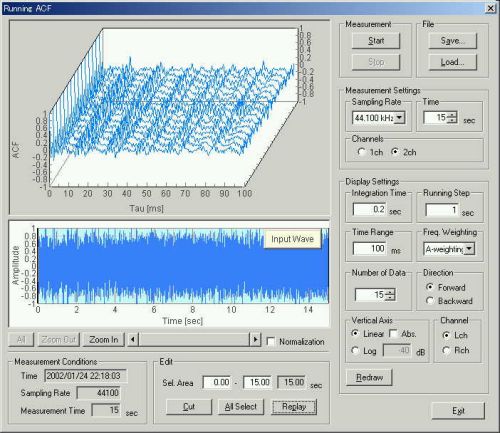
This is the window where we set the calculation conditions in the Sound Analyzer. The integration time is set to 2 sec, and the running step for recalculation is set to 0.1 sec. This means that the sound level and other acoustical parameters are calculated for a 2 s portion of sound in every 0.1 s. This is the same condition as used in the analysis of the music signals.
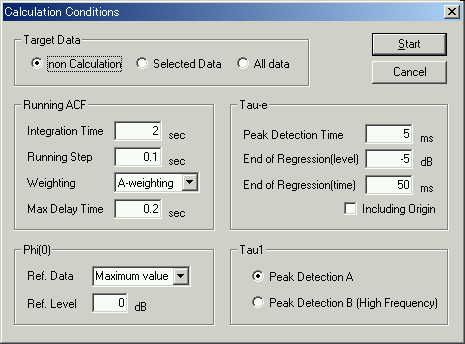
Calculation is completed. Open the data to see the results.
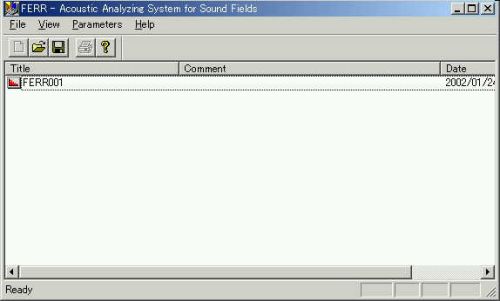
The relative sound level, F(0), gradually increases, but its amount is only 1.8 dB as indicated by the vertical axis. So, the sound may be perceived as almost constant level.
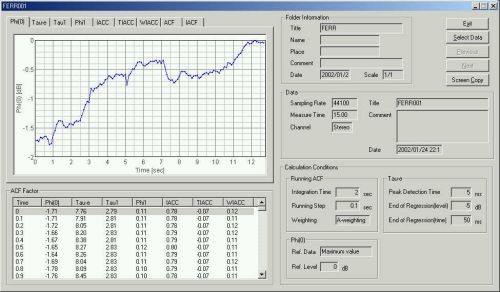
The te value (effective duration of the ACF) is between 6 and 8 ms. Small values of te means that the sound is less reverberant.
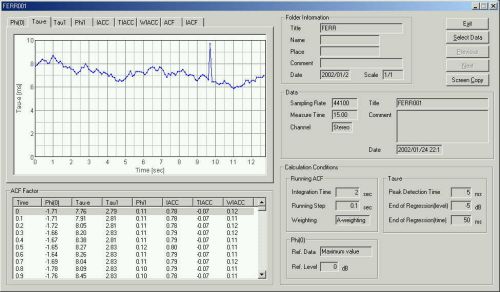
The t1 value [ms] is the time delay of the first peak in the ACF. Delay times of other peaks in the ACF are also calculated. t1 corresponds to the representative frequency of sound (1000 / t1). In this sound, the representative frequency is almost constant at 2.8 ms. It is about 357 Hz in frequency. In the case of exhaust noise, this frequency corresponds to the perceived pitch height.
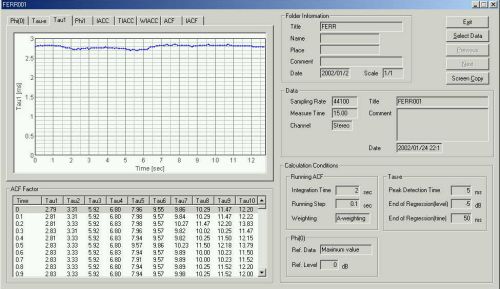
The f1 (amplitude of the first peak) represents the perceived pitch strength. Amplitude of other peaks are also calculated. The results shows that the sound has a very weak pitch. This is probably because the engine speed is very low (969rpm) during idling. I assume that the tonal sound increases at higher rpm.
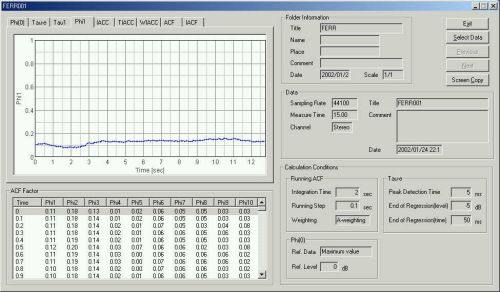
This is the ACF waveform of the Ferrari V8 engine sound during idling. The maximum peak at 32 ms shows the fundamental frequency of sound. Its frequency is 1000/32=31.25 Hz. This frequency should correspond to the interval of explosions inside the engine cylinder, but is actually a half of that measured by the spectrum. It was estimated as 64 Hz as you can see the previous report and in the spectrum below.
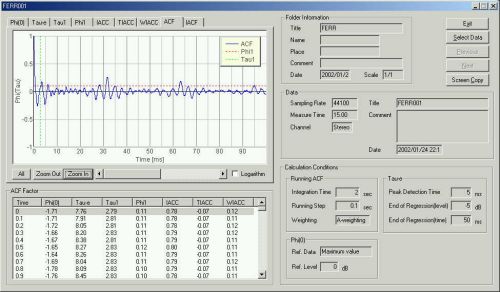
The spectrum for the same data portion. We can see a peak at around 64 Hz, but it is difficult to see the fundamental at 32 Hz. The reason of this mismatch is not clear yet... -> This problem has been solved by calculating the ACF without A-weighting. See car4.htm.

Analysis results are summarized as follows.
Above acoustic parameters give information about the sound quality of the exhaust noise, but it is not clear at this point whether those are typical results for all exhaust. For comparison, the same analysis will be applied to the exhaust noise of Alfa Romeo V6 engine.
April 2003 by Masatsugu Sakurai